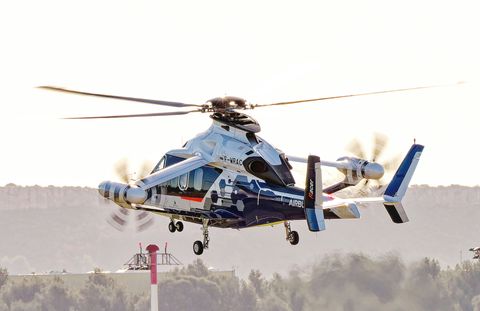Airbus Helicopters has taken the spotlight in the race to define the future of rotorcraft, unveiling its groundbreaking RACER demonstrator at an industry event in Marignane, France.

This €200 million ($217 million) marvel represents a bold gamble on a revolutionary design that merges the stability of a traditional helicopter with the swiftness of a fixed-wing aircraft.
The RACER’s core focus is speed. Airbus Helicopters CEO Bruno Even emphasizes the importance of rapid response times in critical situations, particularly search-and-rescue missions where the “golden hour” – the timeframe considered crucial for delivering medical attention – can mean the difference between life and death.
The RACER’s ability to reach accident sites faster could significantly improve patient outcomes.
This innovative design has the potential to extend beyond civilian applications.
Military applications are on the horizon, with NATO currently engaged in a comprehensive study to define the next generation of helicopters.
The specific features that NATO prioritizes will undoubtedly influence the direction of future rotorcraft development.
The RACER’s public debut marks the culmination of seven years of meticulous development at Airbus Helicopters’ base in southern France.
While its first flight took place discreetly in April, this public showcase offered industry leaders, politicians, and European Union representatives a chance to witness the RACER in action.
Airbus, the world’s leading civil aerospace manufacturer, is no stranger to pushing the boundaries of helicopter design.
For years, they have been engaged in fierce competition with rivals like Lockheed Martin’s Sikorsky division.
Over a decade ago, Sikorsky’s X2 demonstrator helicraft broke the speed record, prompting Airbus to up the ante.
The RACER is the successor to the X3 demonstrator, unveiled by Airbus in 2010 with an air of secrecy.
The X3 went on to unofficially surpass the Sikorsky X2’s speed record, solidifying Airbus’s position as a major player in the high-speed helicopter race.
Both the RACER and its predecessor, the X3, represent a design philosophy that seeks to combine the strengths of fixed-wing aircraft and traditional helicopters.
However, there is no single, universally accepted vision for the future of rotorcraft.
Just months before the RACER’s unveiling, Italy’s Leonardo and the US-based Bell announced a collaborative effort to develop the next generation of tiltrotor technology.
Unlike the RACER, tiltrotor designs completely replace the traditional overhead rotors with side-mounted rotors that can swivel 90 degrees.
This allows for high-speed forward flight, potentially making them well-suited for military missions.
Proponents of tiltrotor technology highlight its superior speed and range, making it ideal for military applications.
However, critics argue that the tilt mechanism adds complexity, resulting in higher maintenance costs.
The RACER, with its fixed overhead rotors and forward-facing propellers, offers a potentially simpler and more cost-effective solution for achieving high speeds.
Airbus boasts that the RACER will achieve a cruising speed of 220 knots (400 kilometres per hour), a significant leap from the typical cruising speed of around 140 knots for traditional helicopters.
This positions the RACER as a strong contender in the race for high-speed rotorcraft.
The unveiling of the RACER marks a pivotal moment in the evolution of rotorcraft.
While the debate over the optimal design for the future continues, Airbus has undeniably made a bold statement with this innovative demonstrator.
The coming years will likely see intense competition between different design philosophies as companies strive to define the next generation of rotorcraft.










